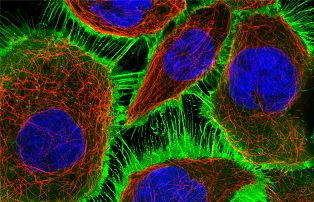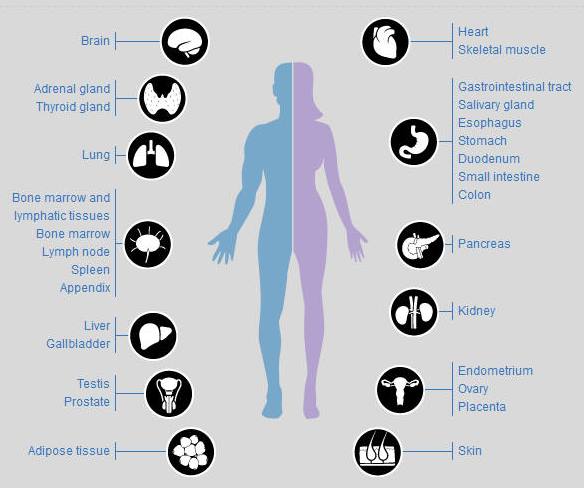First map of all known proteins in human body is goldmine for drug discovery
28 January 2015
The Human Protein Atlas is an open source interactive map showing all the known proteins in the human body and how they are distributed in tissues and organs.
It gives a detailed picture of the proteins that are linked to cancer, the number of proteins present in the bloodstream, and the targets for all approved drugs on the market.
The Human Protein Atlas is the result of a major multinational research project supported by the Knut and Alice Wallenberg Foundation.
Based on 13 million annotated images, the atlas shows both proteins restricted to certain tissues, such as the brain, heart, or liver, and those present in all. As an open access resource, it is expected to help drive the development of new diagnostics and drugs, but also to provide basic insights in normal human biology.

An image from the Human Protein Atlas
Approximately 20,000 protein coding genes in humans were analysed and classified using a combination of genomics, transcriptomics, proteomics, and antibody-based profiling, says the article's lead author, Mathias Uhlén, Professor of Microbiology at Stockholm's KTH Royal Institute of Technology and the director of the Human Protein Atlas program.
The analysis shows that almost half of the protein-coding genes are expressed in a ubiquitous manner and thus found in all analysed tissues. Approximately 15% of the genes show an enriched expression in one or several tissues or organs, including well-known tissue-specific proteins, such as insulin and troponin. The testes, or testicles, have the most tissue-enriched proteins followed by the brain and the liver.
The analysis suggests that approximately 3,000 proteins are secreted from the cells and an additional 5,500 proteins are located to the membrane systems of the cells.

The expression all protein-coding genes in all
major tissues and organs
in the human body can be explored
in the interactive
database of the Human Protein Atlas
"This is important information for the pharmaceutical industry. We show that 70% of the current targets for approved pharmaceutical drugs are either secreted or membrane-bound proteins," Uhlén says. "Interestingly, 30% of these protein targets are found in all analysed tissues and organs. This could help explain some side effects of drugs and thus might have consequences for future drug development."
The analysis also contains a study of the metabolic reactions occurring in different parts of the human body. The most specialised organ is the liver with a large number of chemical reactions not found in other parts of the human body.
Further information
The Human Protein Atlas is at: http://www.proteinatlas.org/
Reference
Uhlen M, et al. Tissue-based map of the human proteome. Science
23 January 2015: Vol. 347 no. 6220. DOI: 10.1126/science.1260419
Web link:
www.sciencemag.org/content/347/6220/1260419